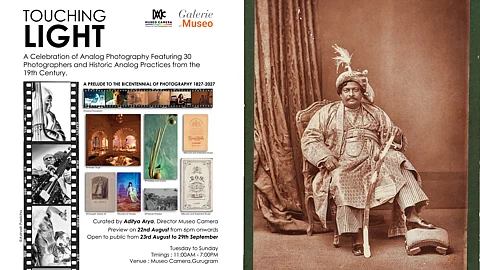
- HOMEGROWN WORLD
- #HGCREATORS
- #HGEXPLORE
- #HGVOICES
- #HGSHOP
- CAREERS
- ABOUT US
- CONTACT US

In 1827, using a camera obscura fitted with a pewter plate thinly coated with bitumen of Judea, a naturally occurring asphalt, French inventor and printmaker Nicéphore Niépce produced the first fixed photograph from nature: a view of the courtyard of his country estate, Gras, near Chalon-sur-Saône, a city almost 300 kilometres southeast of Paris, from an upper window of the house. The exposure time was about eight hours, during which the sun moved from east to west so that it appeared to shine on both sides of the building.
This was a breakthrough that transformed how humanity records likeness, memory, and history. Since its inception, photography has become one of the most profound human inventions, fundamentally changing the ways we perceive and remember our experiences.
In India, the evolution of analog photography over two centuries reflects how the medium evolved through adaptation, resilience, and creativity. Early analog photographers in India, working with limited resources, embraced the Indian ethos of jugaad—or creative improvisation—to produce vital bodies of work that recorded colonial histories, social transformations, and the evolving cultural fabric of the nation. Today, their photographs stand as precious fragments of memory, serving as both a testament to their artistic vision and a historical record of the nation.
As photography approaches its bicentennial milestone in 2027, Museo Camera Centre for the Photographic Arts, Gurugram, presents 'TOUCHING LIGHT: A Prelude to the Bicentennial of Photography (1827–2027)' — a group exhibition curated by Aditya Arya that pays tribute to the practitioners and the practice of analog photography. The first photographic exhibition of its kind, TOUCHING LIGHT brings together rare historical images from Museo Camera and India Photo Archive's collections alongside analog silver prints, chemigrams, and diapositives by leading contemporary Indian photographers.
“TOUCHING LIGHT is an ode to the pioneers and contemporary masters of photography whose vision and craft have shaped India’s visual history. This exhibition is both a celebration and a reminder of analog photography’s lasting beauty and significance as we approach 200 years of the medium.”
Aditya Arya, Founding Director of Museo Camera
Highlights of the exhibition include rare archival images from the Carte de Visite portraits by Bourne & Shepherd — one of the first commercial photography studios in India; albumen prints from 'The People of India' (1850s–1860s), a series of 468 annotated photographs by John Forbes Watson and John William Kaye; and the 'Beauties of Lucknow' album (1870s) attributed to Darogah Abbas Ali, a professional photographer and engineer in 19th-century Lucknow.
TOUCHING LIGHT celebrates analog photography as both image and object — fragile, imperfect, and profoundly human. By placing rare archival images alongside modern interpretations of analog methods by contemporary Indian photographers like Avinash Pasricha and Pradeep Dasgupta, it invites audiences to engage with the materiality of memory while honouring the legacy of those who preserved and shaped India's photographic heritage.
If you enjoyed reading this, here's more from Homegrown:
Sawai Ram Singh II: Meet The Maharajah Who Helped Pioneer Indian Photography
Dhirajlal R. Mody: The Forgotten Legacy Of An Early Indian Pictorialist, Rediscovered
When Henri Cartier-Bresson Captured The Birth Of The Nation And The Death Of The Mahatma
